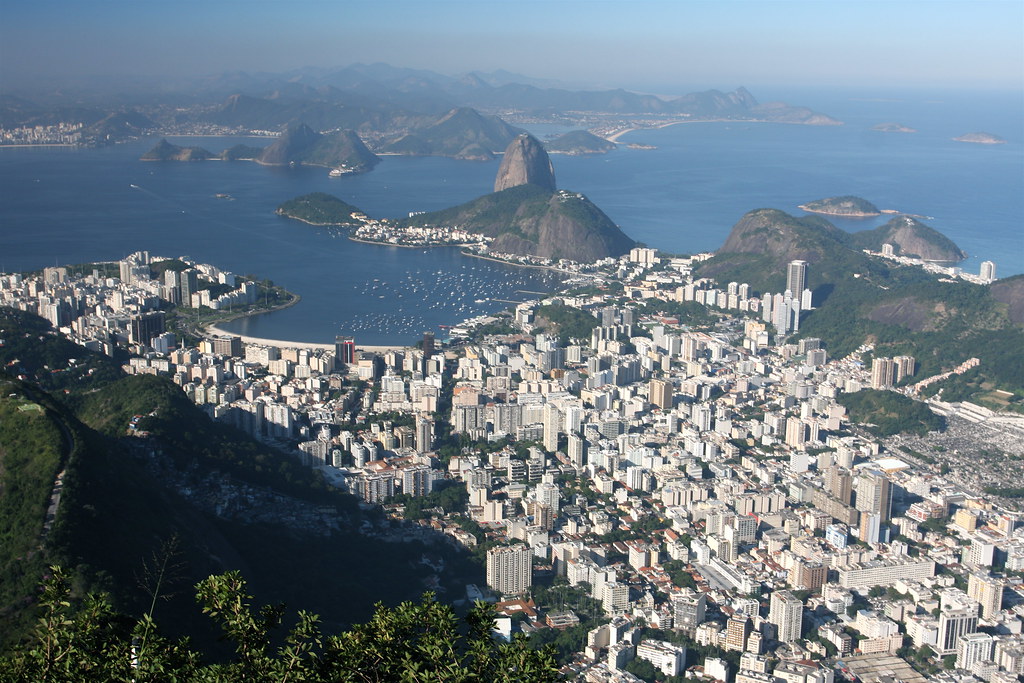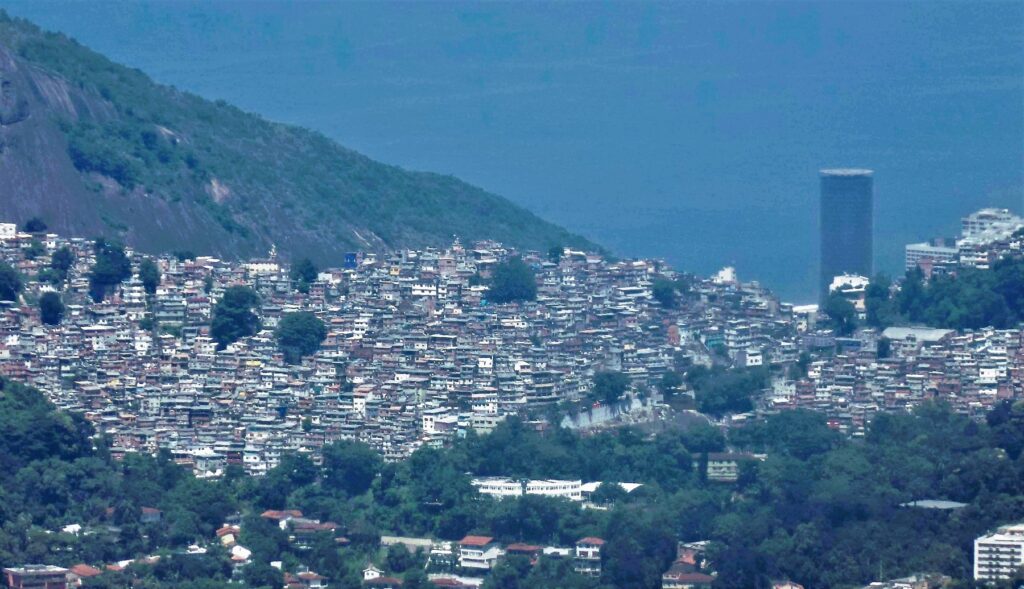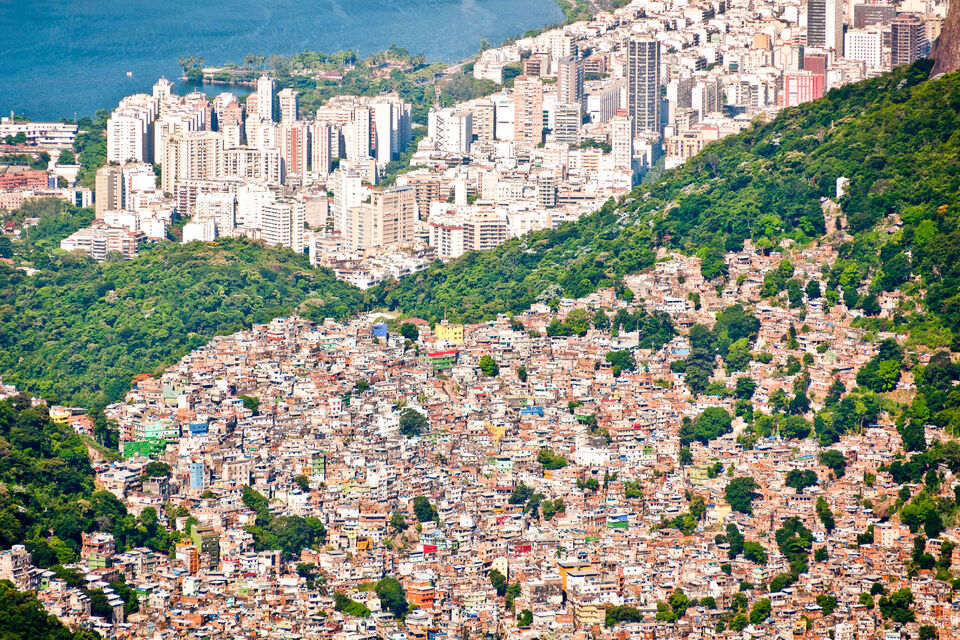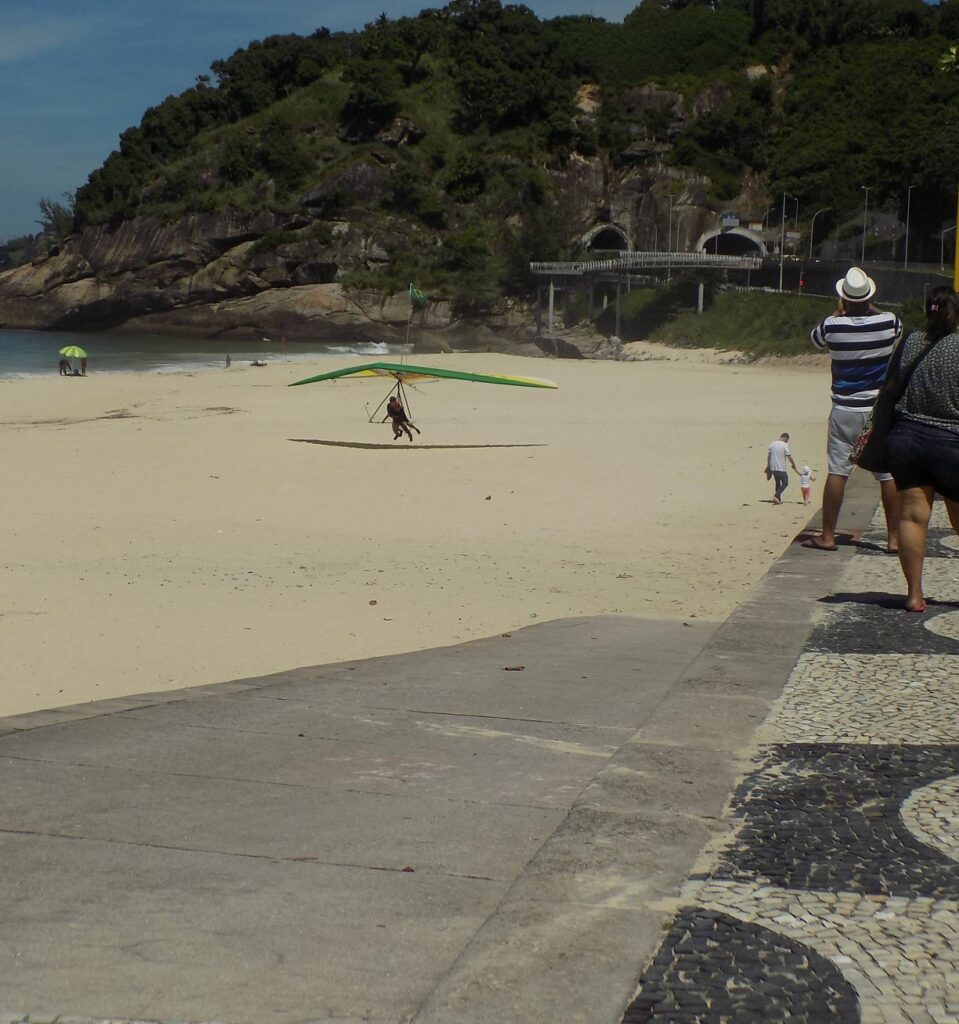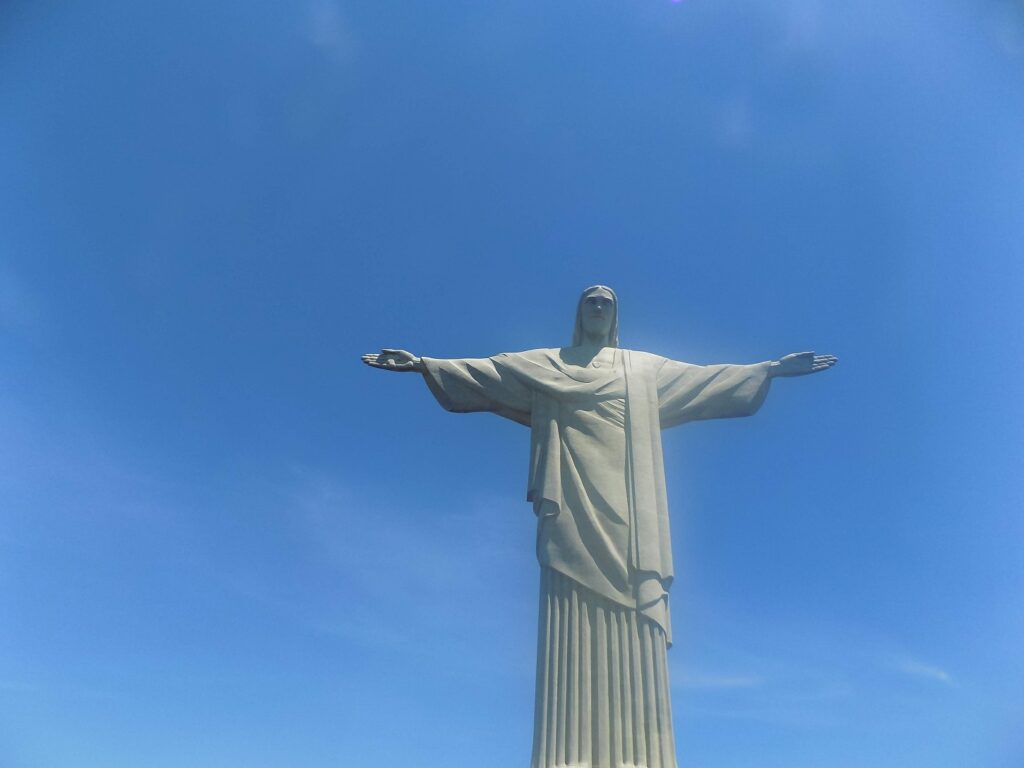Today we land in Rio de Janeiro the most recent and final stop on the tour of Olympic host cities I’ve visited (through July 2022) and I’m writing the initial draft of this post almost three years to the day after I visited this simultaneously gleaming and rundown jewel of a city. Rio was the first stop on a three week cross continental journey from the east to the west coast of South America that you can read about in detail here if you want and have yet to do so.
I’d left the Washington area on an unseasonably cold March evening and touched down in Rio dressed inappropriately for the seasonably hot late summer day. Because I’d arrived early Wednesday morning, I had to wander through the neighborhood near the hotel for several hours before my room was ready. With the hotel just blocks from Copacabana Beach, it wasn’t arduous or unpleasant but by the time the room was ready, sapped by the combination of heat, humidity, and winter layers of clothing I required an extended nap.
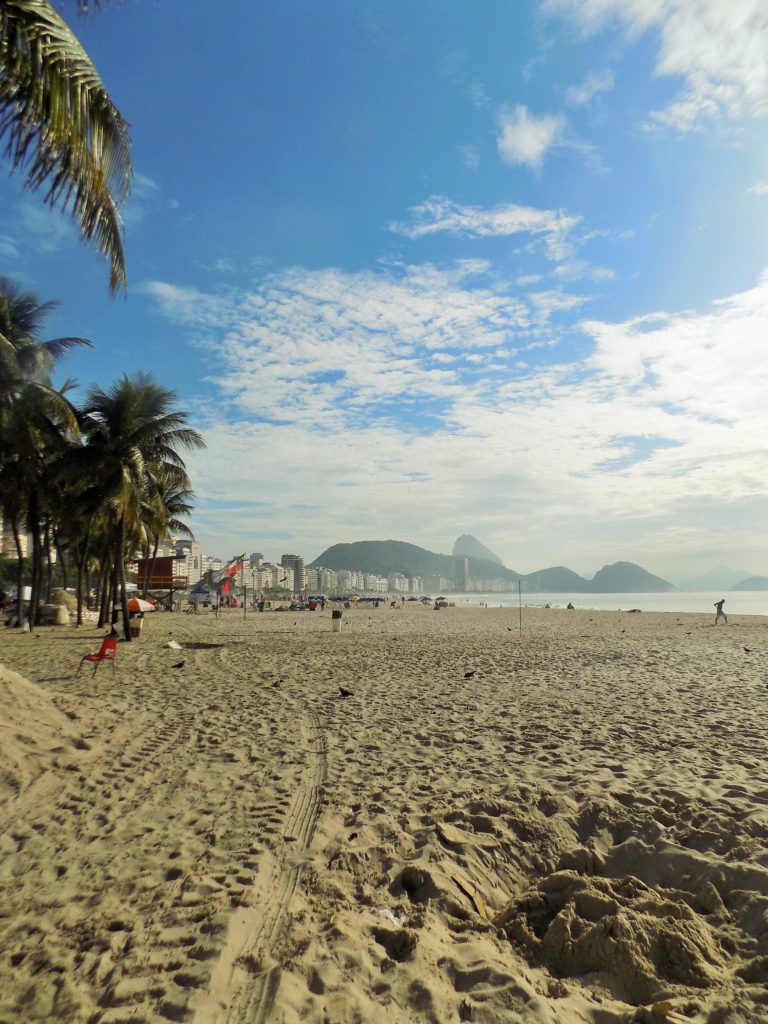
The tour I was on was the ultimate small group tour – three travelers and a guide. Here’s a photo of our group on our first night together.
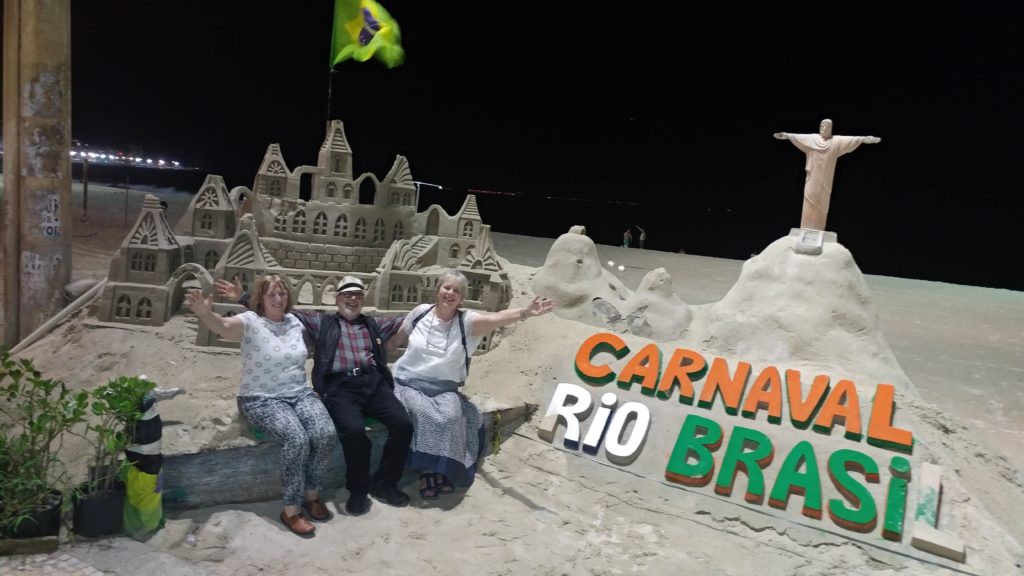
There’s a potential peril to traveling for several weeks with so small a group. If no one gets along with each other, it’s weeks of misery for everyone. If two get along but the third doesn’t, it means weeks of feeling excluded and uncomfortable for that one. The final options is that everyone enjoys being together and it’s weeks of pleasure. In our case, it was the latter and the smiles visible in the photo lasted for the duration.
A city of contrasts within contrasts
I called Sarajevo a City of contrasts but for reasons completely different from those may had me attach that appellation to Rio. Seen from an elevated vantage point or seen from a distance, Rio de Janeiro appears as a city of gleaming, mostly white towers with a dramatic coastal landscape
as one might see in this view from Corcovado – the 710 meter high home of the famous and gigantic Cristo Redentor (Christ the Redeemer) statue. Turn in a different direction or change the angle of your view from that same vantage point and you’re greeted with a look at a contrasting Rio – the Dona Marta neighborhood colloquially called the Santa Maria Favela.
Or, as this photo from CDN.getyourguide.com shows, you can see both at once.
The poverty in the favelas is overt and easy to see even from a distance. To see and experience the poverty in the city of towers you need to get closer. I can tell you within both of the above photos, you’ll find pock-marked buildings that have seen no exterior maintenance for years. You’ll find abandoned buildings seemingly awaiting the wrecking ball. Walk though parts of Rio, even those close to where the tourists are funneled, and your nose will likely be assaulted with the the smells of urine and rotting garbage.
But then there is the Rio of the Two Brothers inviting parasailers to fly off 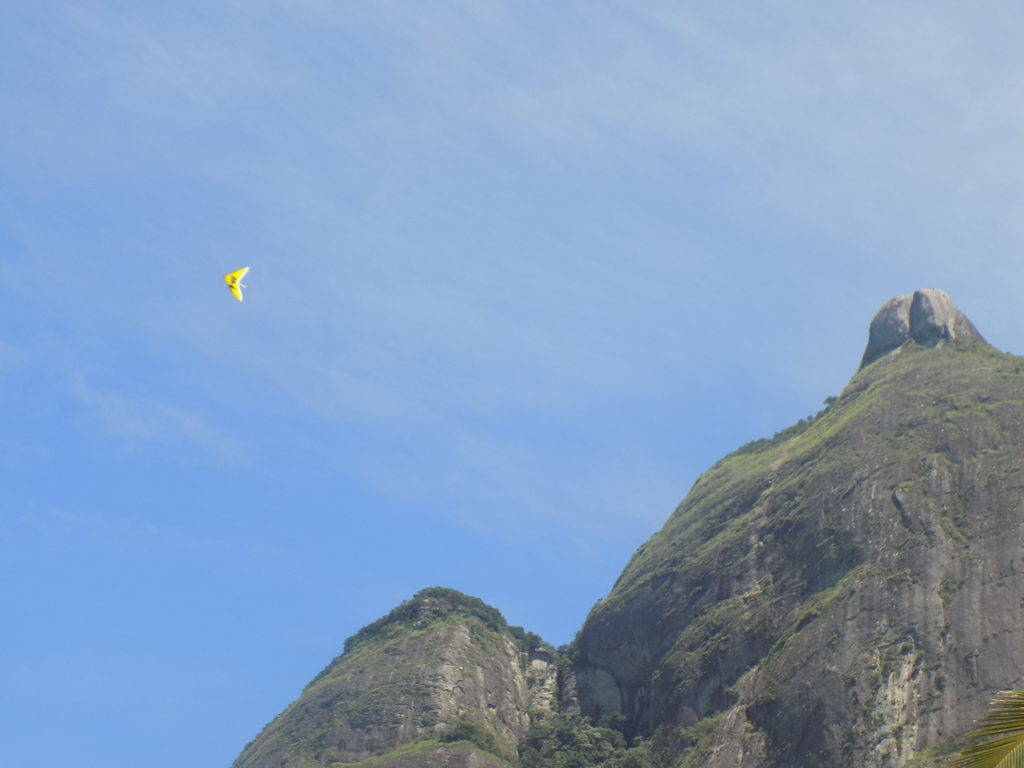
and touch down on San Conrado Beach because one can’t think of Rio and not think of its beaches.
There is the Rio of the Catedral Metropolitana de São Sebastião or Metropolitan Cathedral of Rio de Janeiro with glass windows invisible from the outside that ascend 61 meters up each wall where they connect to a cross shaped skylight and that can accommodate up to 20,000 people.

There’s the quirky Rio of the Escaderia Selarón the public street stairway begun by the Chilean born artist Jorge Selarón in 1990. For him, something that began as a diversion, to repair the crumbling steps outside his home by covering them in bits of brightly colored tile, became his life’s work and a project he came to view as his tribute to his adopted city and the Brazilian people
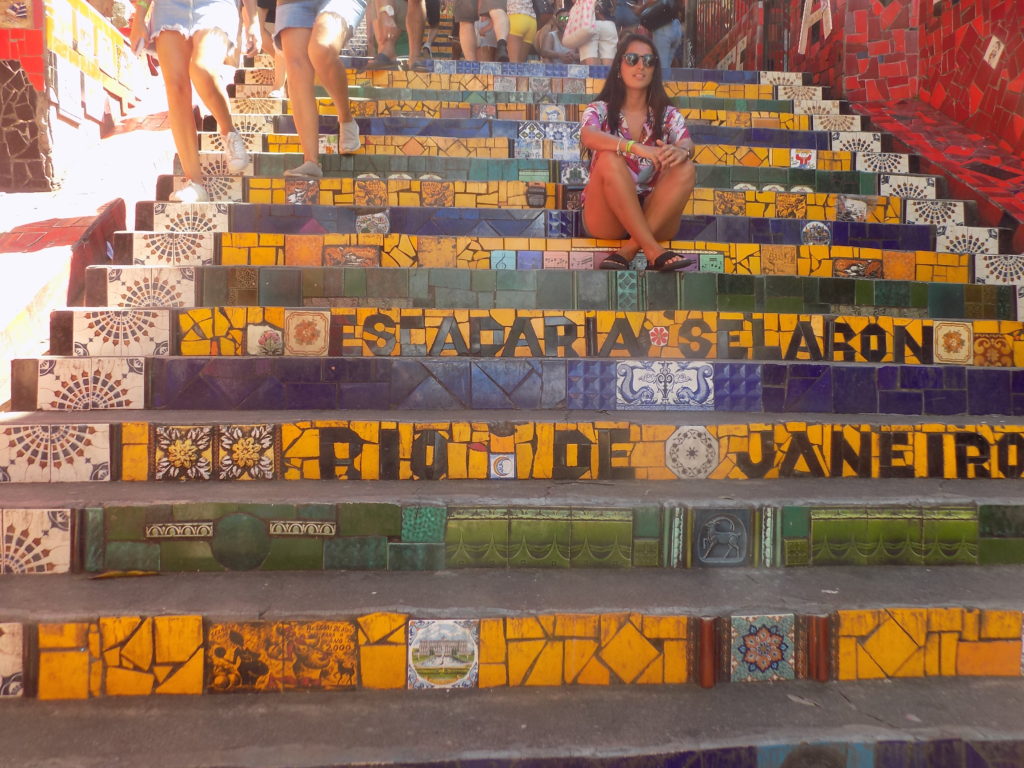
and of which he once said, “I made the most fantastic staircase ever in the history of humanity. In Rio de Janeiro! Because it couldn’t have happened in any other city!”
There is the Rio of the Pão de Açúcar or Sugarloaf Mountain where Estacio de Sa founded the city of São Sebastião do Rio de Janeiro or the city of Saint Sebastian in Rio de Janeiro on 1 March 1565. Pão de Açúcar looks like this
and provides this view (among others)
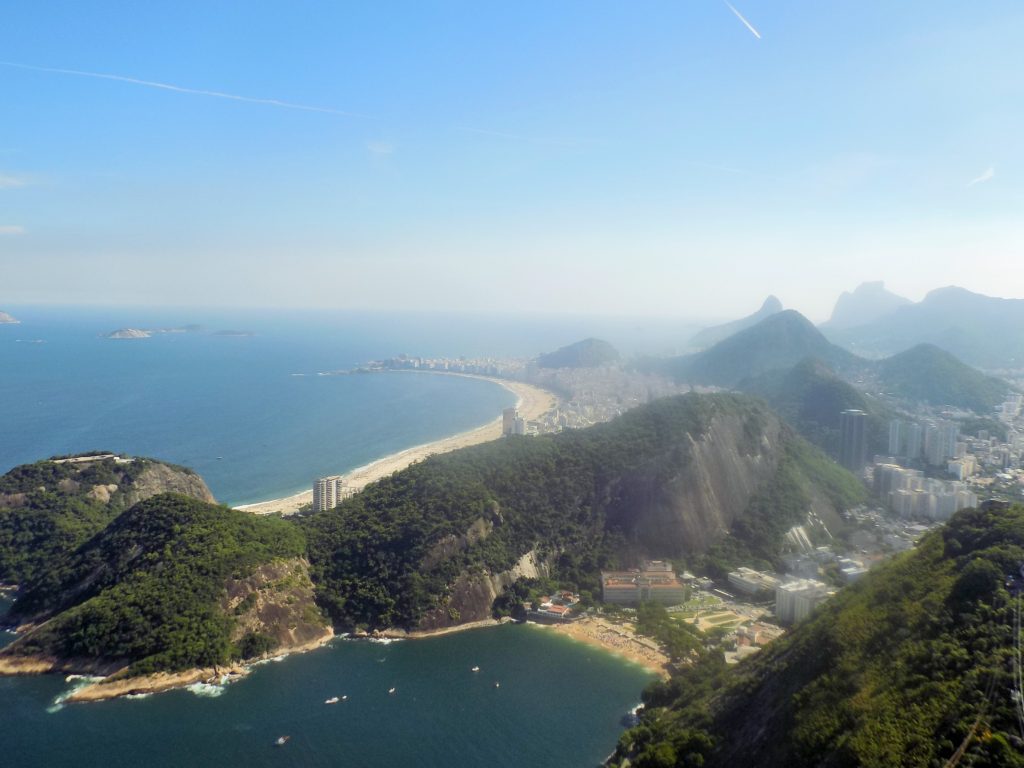
from the top.
Or, as previously mentioned, the Rio of Corcovado and Cristo Redentor
And, of course, there is the Rio of Carnival and samba and bossa nova. Finally, as we will see in the next post, the Rio of the Olympics.
In one of my first posts about my South American adventure, I wrote this first impression of Rio:
Distant women (or men for that matter) are almost always at their most beautiful. They don’t lose their beauty but, with a certain inevitability, the closer we come – physically or emotionally – the more their nicks and flaws emerge. For me, this is Rio de Janeiro. Viewed from the approach of my airplane or in some of the famous photos from the peaks of Pão de Açúcar or Corcovado Rio is a glistening metropolis crammed with glittering towers and comprised of charming neighborhoods nestled between mountains or following the crescent arcs of Atlantic beaches like Copacabana.
Come close to the city and the rough edges emerge. From the crammed favelas (slums) and their precariously balanced shelters to the somewhat gone to seed facades of many of those distantly gleaming towers to the breadth of olfactory experiences that transform swiftly from the welcoming scent of a favorite kitchen to the similarly familiar but far less appetizing stench of rotting trash and human waste, Rio isn’t shy about showing you who it is with all its beauty and all its imperfections.
Rio brazenly challenges you. If you are to enjoy the beauty of its dramatic landscapes, from the stark bornhardts like Pão de Açúcar or the Two Brothers to the reclaimed Tijuca Forest to the wide beaches of Ipanema and Copacabana, if you want to admire the grand architecture of the Cathedral or the city’s rising towers, you must also accept the crowds, the smells and the slums.
“Take me as I am with my beauty and my blemishes,” the city says defiantly. “Or take me not at all.”
This is the city that remains in my memory.
